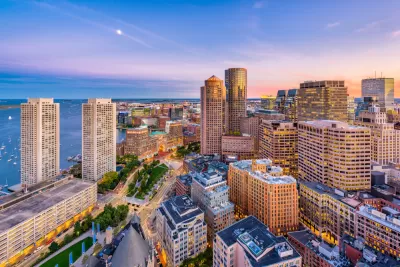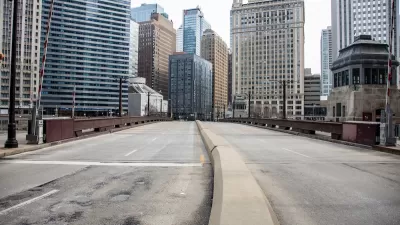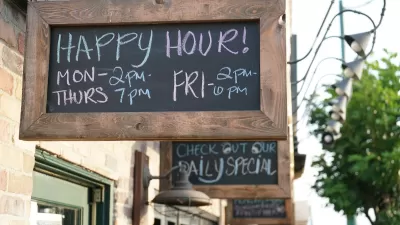In the age of remote work, relying on major employers to boost a city’s economic fortunes may no longer be enough.

Writing in Route Fifty, Molly Bolan comments that “the rise of remote work has permanently changed urban economies, and cities are going to have to double down on their strengths to attract more residents.” Referencing a study of six powerhouse U.S. cities that, in the past, wooed big corporations to develop their economies, Bolan writes that they will now have to shift their focus to luring residents with other amenities. “Without the call of the office bringing people downtown, cities and states will need to get creative in finding new ways to keep metro economies afloat.”
“Between 2020 and 2022, the six cities were among those that saw the greatest declines in population in the country, with New York losing more than 400,000 residents in those two years, according to the Census Bureau. Meanwhile, nine of the 15 fastest-growing cities in the U.S. are in Southern states and four are in the West, thanks to lower housing costs, shorter commutes, and remote work.”
According to Doug Howgate, president of the Massachusetts Taxpayers Foundation, “At a fundamental level, your economy and your society only succeed if you have the resource of people.” In the case of Boston, which previously relied on downtown workers, the city has launched a $1 billion life sciences initiative that seeks to support the city’s biopharmaceutical industry and create new opportunities for people to live and work there.
Howgate notes that there is no ‘silver bullet’ for maintaining growth, and that disruptions like the pandemic will likely continue. Cities must identify their unique advantages: “Building a strong urban economy requires understanding the complex relationships around housing, life sciences, federal funding and taxes,” says Howgate.
FULL STORY: If jobs won’t bring people downtown to work, what will?

Study: Maui’s Plan to Convert Vacation Rentals to Long-Term Housing Could Cause Nearly $1 Billion Economic Loss
The plan would reduce visitor accommodation by 25,% resulting in 1,900 jobs lost.

North Texas Transit Leaders Tout Benefits of TOD for Growing Region
At a summit focused on transit-oriented development, policymakers discussed how North Texas’ expanded light rail system can serve as a tool for economic growth.

Why Should We Subsidize Public Transportation?
Many public transit agencies face financial stress due to rising costs, declining fare revenue, and declining subsidies. Transit advocates must provide a strong business case for increasing public transit funding.

How to Make US Trains Faster
Changes to boarding platforms and a switch to electric trains could improve U.S. passenger rail service without the added cost of high-speed rail.

Columbia’s Revitalized ‘Loop’ Is a Hub for Local Entrepreneurs
A focus on small businesses is helping a commercial corridor in Columbia, Missouri thrive.

Invasive Insect Threatens Minnesota’s Ash Forests
The Emerald Ash Borer is a rapidly spreading invasive pest threatening Minnesota’s ash trees, and homeowners are encouraged to plant diverse replacement species, avoid moving ash firewood, and monitor for signs of infestation.
Urban Design for Planners 1: Software Tools
This six-course series explores essential urban design concepts using open source software and equips planners with the tools they need to participate fully in the urban design process.
Planning for Universal Design
Learn the tools for implementing Universal Design in planning regulations.
City of Santa Clarita
Ascent Environmental
Institute for Housing and Urban Development Studies (IHS)
City of Grandview
Harvard GSD Executive Education
Toledo-Lucas County Plan Commissions
Salt Lake City
NYU Wagner Graduate School of Public Service





























